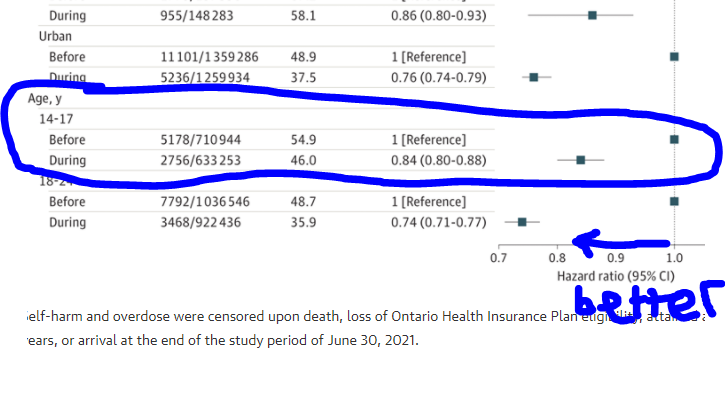More ghoulish suicide shenanigans from #UrgencyOfNormal
Watch the switch - they couldn't lose the word suicide! V1 talks about "other mental health impacts," on top of the INCORRECT suicide line.
/1
Watch the switch - they couldn't lose the word suicide! V1 talks about "other mental health impacts," on top of the INCORRECT suicide line.
/1

New version: Now that suicides not useful, just remove it!
It just disappears. That's awful & unscientific.
It should keep the topic, but more accurately:
"Fortunately, there were no significant increases in child suicides in 2020."
Hiding it is unscientific & biased.
/2
It just disappears. That's awful & unscientific.
It should keep the topic, but more accurately:
"Fortunately, there were no significant increases in child suicides in 2020."
Hiding it is unscientific & biased.
/2

However, they definitely have to scare parents, teachers, and educators with the word "suicide", because they are ghoulish about suicide.
So they BORROW "suicide attempts" from secondary slides (not important enough before) put it back in the summary slide.
/3
So they BORROW "suicide attempts" from secondary slides (not important enough before) put it back in the summary slide.
/3

Weird! They *didn't* just edit their slides to remove the inaccurate data. They moved a non-summary entry to the summary entry.
/4

/4


I will state it plainly. If suicides were important when the outcome was SIGNIFICANT, they are just as important when INSIGNIFICANT.
What they did is misleading, and bad science.
Do not trust science communicators that do this.
/5
What they did is misleading, and bad science.
Do not trust science communicators that do this.
/5
I sent the authors a JAMA article (1.5 million Ontario youth, suicide attempts + overdose presentations in the first 15 months of pandemic were LOWER; Ray et al), and other articles.
Honest scientists would include them in their slides.
jamanetwork.com/journals/jaman…
/6
Honest scientists would include them in their slides.
jamanetwork.com/journals/jaman…
/6
The JAMA article is a complete counterfactual with:
* newer data
* a jurisdiction that had significant school closures
* a focus on 14-17 year-olds
It showed a 26% reduction in hospital presentations.
/7
* newer data
* a jurisdiction that had significant school closures
* a focus on 14-17 year-olds
It showed a 26% reduction in hospital presentations.
/7

I wish they would STOP WEAPONIZING CHILD SUICIDE.
They don't care about suicide statistics. They use child suicide to scare parents, and it reinforces the moral panic.
It pushes their agenda to open schools no matter what the science says.
/8
They don't care about suicide statistics. They use child suicide to scare parents, and it reinforces the moral panic.
It pushes their agenda to open schools no matter what the science says.
/8
I would like schools to be open **when it's safe** based on all the science. You can't ignore some data to make that decision or argument.
School closures may be necessary due to a new variant (see OG-->delta-->omicron), or even a new pandemic.
/fin
School closures may be necessary due to a new variant (see OG-->delta-->omicron), or even a new pandemic.
/fin
• • •
Missing some Tweet in this thread? You can try to
force a refresh












